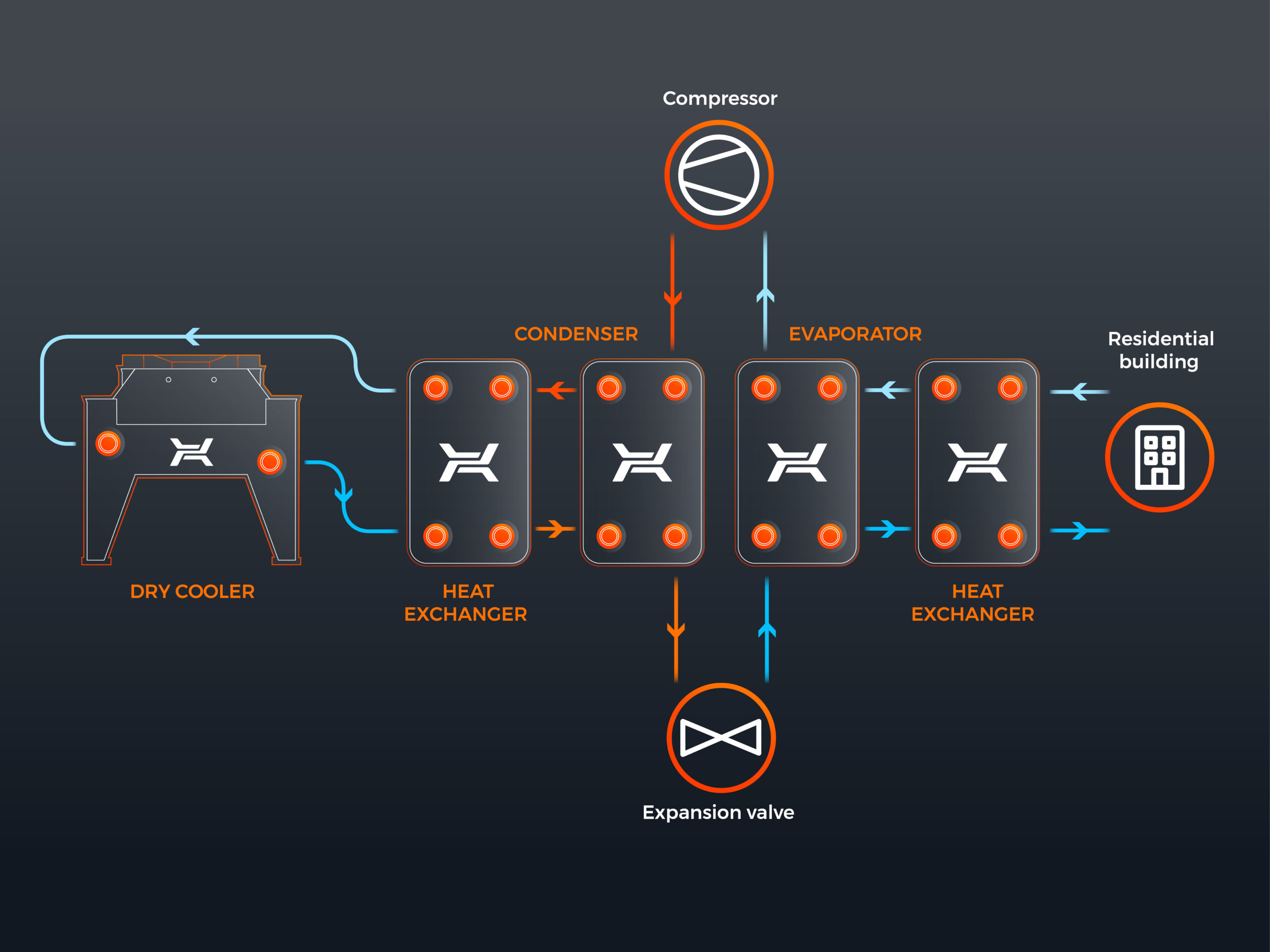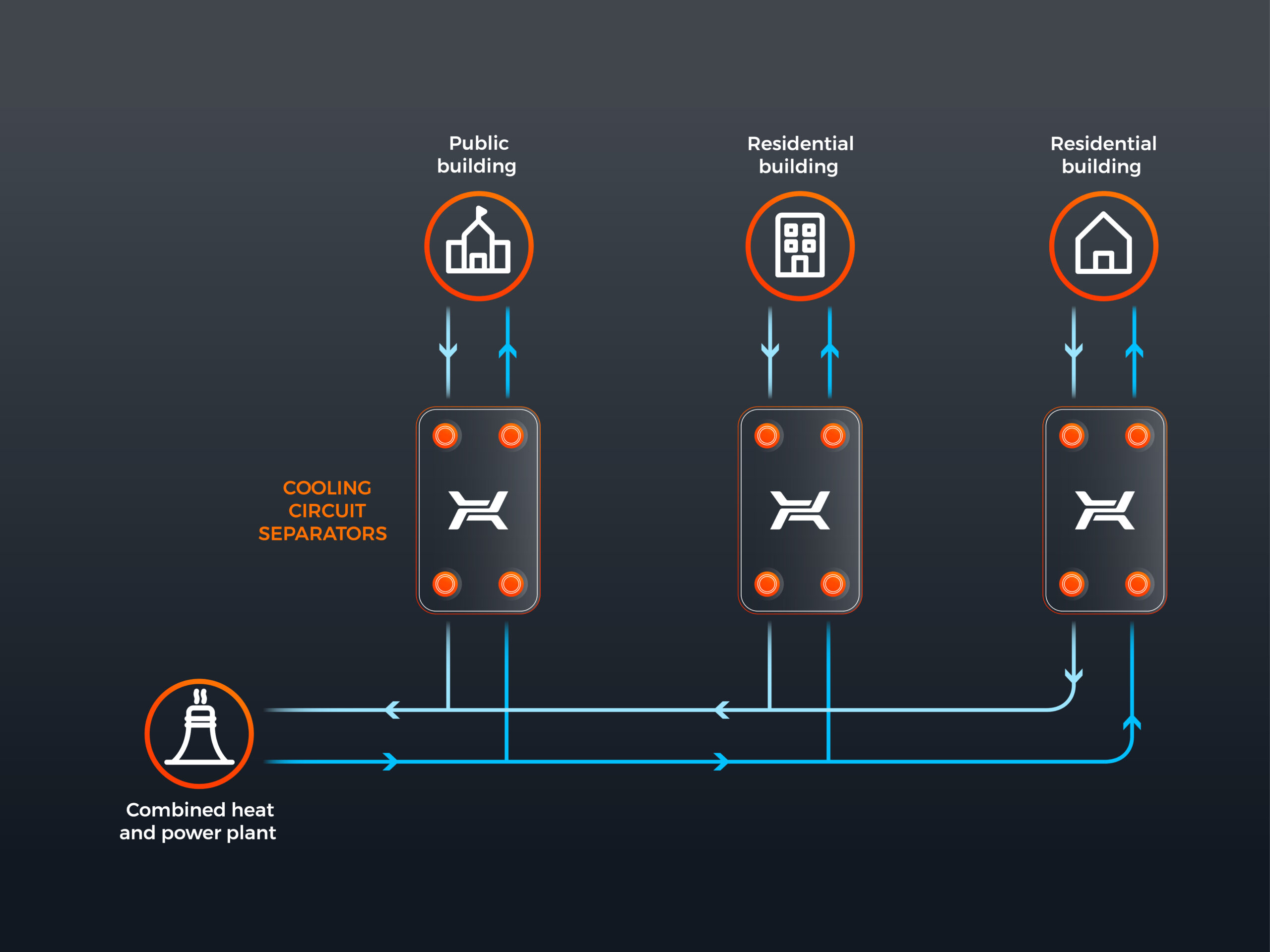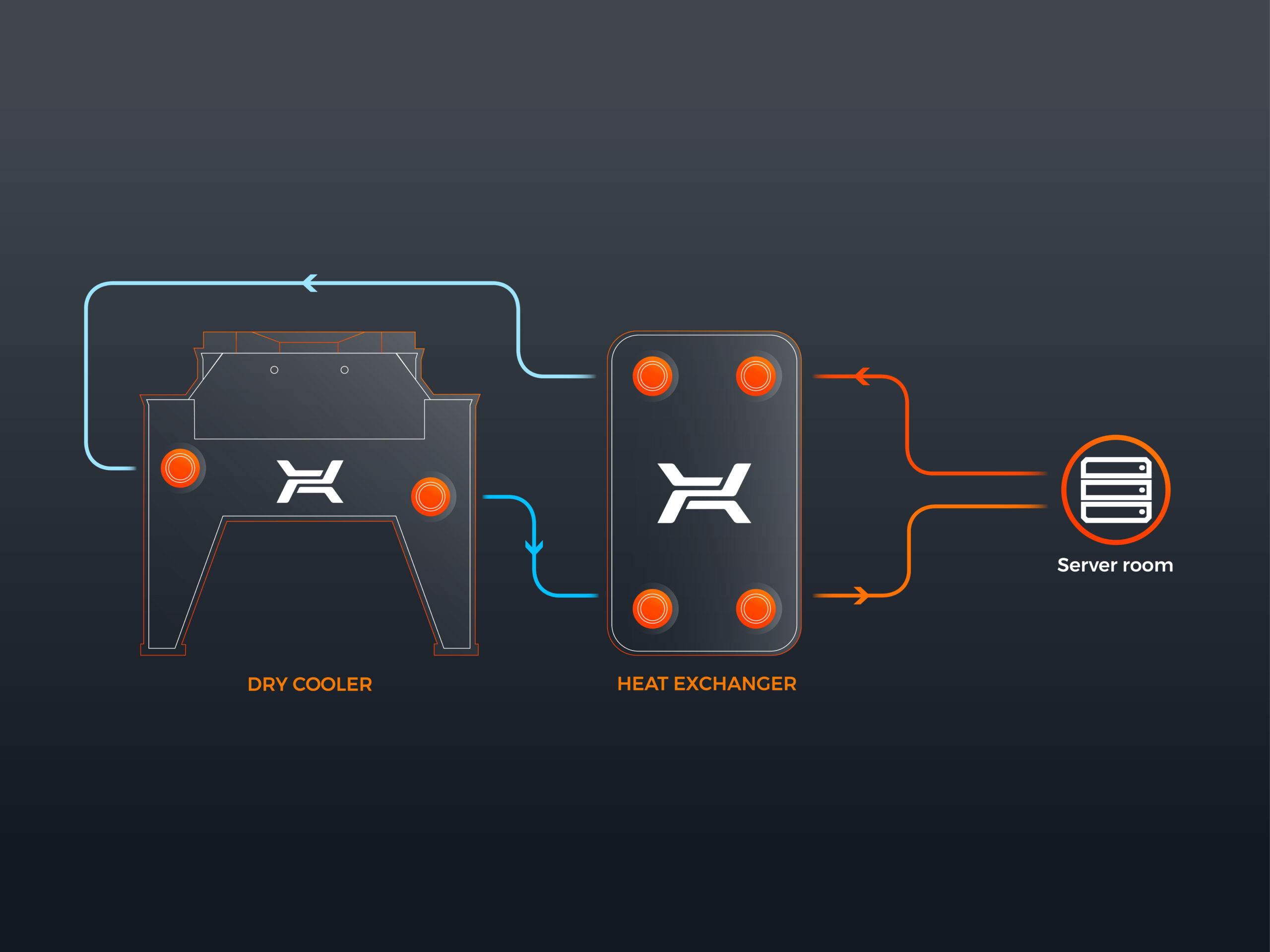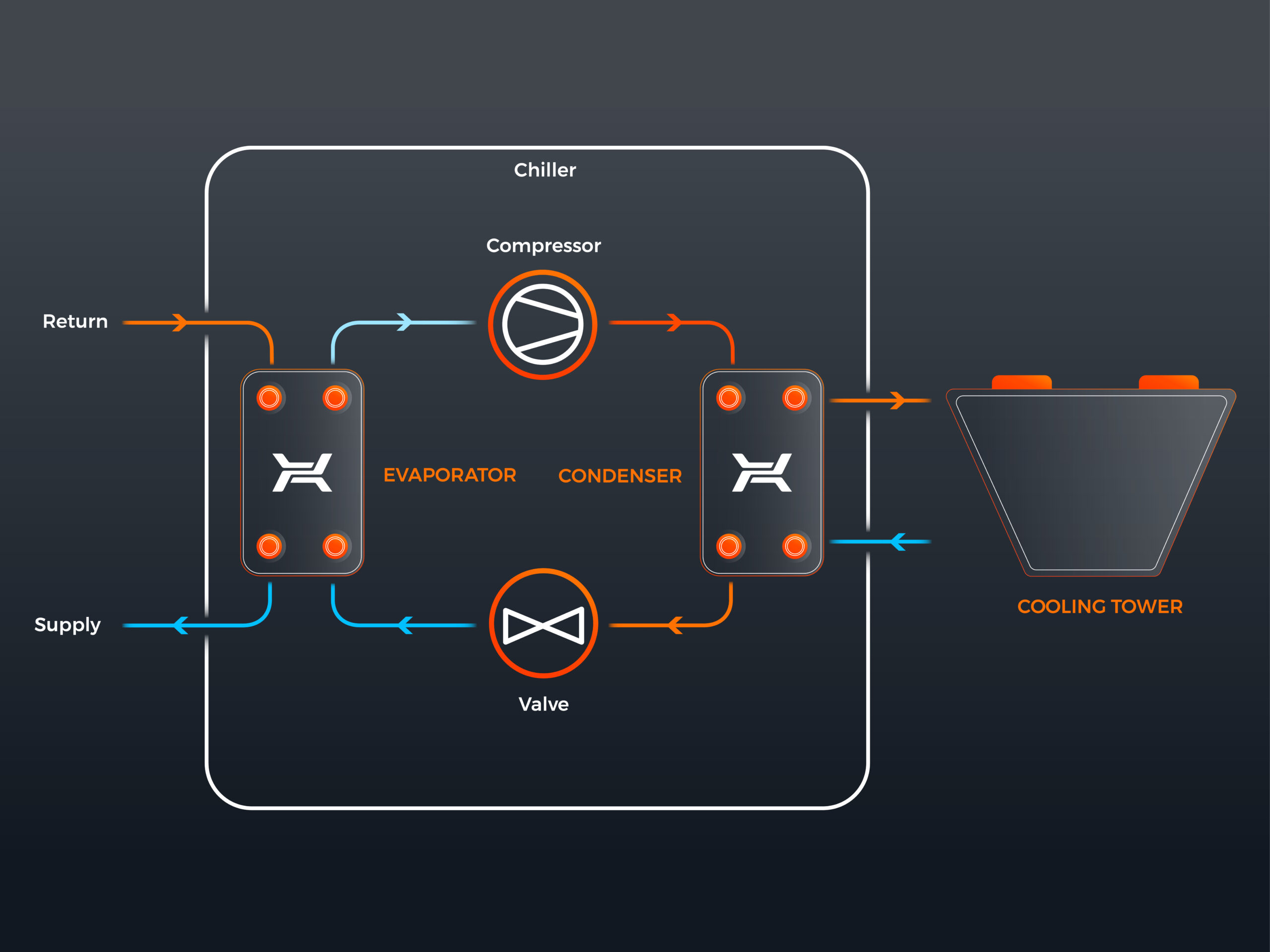Cooling systems
Cooling systems ensure that appropriate thermal comfort is maintained in industrial and commercial facilities.

Cooling systems ensure that appropriate thermal comfort is maintained in industrial and commercial facilities.

They transfer energy from the evaporating refrigerant during the cooling process, while the condensing refrigerant constitutes the energy source during the heating process. Hexonic R-type brazed plate heat exchangers designed to operate as condensers and evaporators are applied in systems where refrigerants are used as media, e.g. in heat pumps and refrigerating units.
This type of exchangers feature an enhanced resistance design and geometric optimization for cooling applications. Selecting the appropriate connectors allows to integrate them with any system supplied with a refrigerant.
Local systems are the most common cooling systems. They provide cooling in a single building, e.g. hotel, hospital or office building. Cooling units (chillers) installed in every building are usually used as cold sources. The cold is transferred to an internal cooling system through a plate heat exchanger. Using an air fluid cooler and a plate heat exchanger allows for system optimization. Appropriate performance ensures a smoother operation of such a system and minimizes the risk of failure.
Heat exchangers may also be installed on different levels of the building. In such an arrangement, they work as pressure manifolds, transferring the cold between zones, which eliminates the issue of pressure difference.

The concept of district cooling becomes ever more popular. Cold is collected through a single, central source instead of local systems placed in every building. This is good for the environment and allows to achieve serious economic benefits. Another advantage of applying such a solution in buildings supplied from a cooling network is the lack of vibrations and noise.
Depending on the needs of a particular building, a municipal cooling system offers large flexibility without the need to install cooling units. The most effective and economical solution is the combination of electricity, heating and cooling from one supplier. Such project allows for minimizing system erection and operation costs.
Cold distribution in central cooling systems may be indirect or direct. In an indirect system, a heat exchanger separates the internal system from the external one. The heat exchanger operates as a pressure circuit separator, which causes a lower internal installation pressure and, at the same time, reduces the noise level in the system. This solution also facilitates leakage detection, which leads to lower operating costs.
What distinguishes a direct cooling system is that it routes the cold to the internal building system, where it is distributed. This type of system increases the risk of water pollution and leakage inside a building.
Installing a Hexonic plate heat exchanger in an indirect cooling system ensures minimal power consumption and enhances system operation.

Cooling systems are an important part of network infrastructure, which is decisive for the high availability of an ICT system. In the 21st century, the world’s attention turned to new technologies. In turn, the world of technology focuses mostly on energy-efficient solutions.
In a typical server room, the cooling systems use approx. 60% of the total power consumption, which makes them one of the key factors determining the profitability level of a data center. Server rooms require 24/7 cooling, thus they use much more power than cooling rooms of other type. Data center owners and operators seek reliable, energy-efficient, modern solutions with a long service life that require minimal maintenance.
Appropriately designed systems ensure efficiency and lower operation costs throughout the year. Proper operational conditions for the installed equipment, regardless of the season and variable loads, are now one of the most important factors analyzed by designers. Hexonic heat exchangers stand out, because of their high performance and compact sizes, which allow to save space in server room cooling systems.

The necessity to keep rooms air-conditioned as a result of production processes is called industrial air conditioning. Providing air conditioning for rooms in the pharmaceutical or food industry or operating theaters constitutes a type of industrial air conditioning. Air purity requirements have been made stricter for such systems. When the main task of air conditioning is to provide good working conditions, we talk about comfort air conditioning. Apartment air conditioning systems evacuate heat from unpressurised air. In such systems, heat exchangers work as internal exchangers, subcoolers, heat recovery exchangers. Heat recovered from air conditioning may be used for heating water.
Mechanical or absorption cooling units are applied in air-conditioning systems. Mechanical cooling unit cools the air using a liquid. Heat in the cooling circuit is collected by an evaporator and a condenser. Hexonic has designed heat exchangers adjusted to operation with modern refrigerants, such as R410A. Brazed plate heat exchangers improve system performance, working also as subcoolers, economizers or attemperators.
Absorption cooling units use lithium bromide as the absorbent and water as the cooling medium. In such systems, heat exchangers function as preheater subcoolers.
